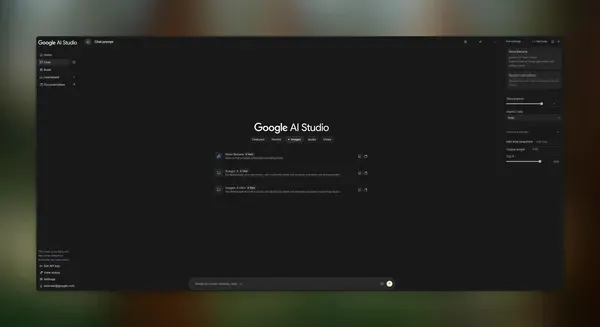Google just rolled out its biggest update to AI Studio yet, transforming how developers build with AI models. The platform now offers a unified workspace where developers can seamlessly switch between Gemini, video generation, and voice models without losing context. With new real-time usage tracking and Google Maps integration, the update addresses developer friction that's been slowing down AI app development across the industry.
Google isn't just tweaking AI Studio - it's completely reimagining how developers interact with AI models. The search giant's latest update tackles one of the biggest pain points in AI development: constantly switching between different tools and interfaces to build comprehensive applications.
The centerpiece is the new unified Playground, where developers can now access Gemini, GenMedia (including the latest Veo 3.1 video capabilities), text-to-speech, and Live models without ever leaving their workspace. "You can go from prompt to image to video to voiceover in one continuous flow," Google DeepMind Senior Product Manager Logan Kilpatrick explains in the company blog post.
This move puts Google in direct competition with OpenAI's integrated approach and Microsoft's Azure AI Studio. But Google's betting on something different - eliminating context switching entirely rather than just improving individual model performance.
The timing couldn't be more strategic. As enterprise AI adoption accelerates, developer experience has become the new battleground. Companies are choosing platforms based on workflow efficiency, not just model capabilities. Google clearly heard this message from its developer community.
The update includes a redesigned homepage that functions as a "command center," showing platform capabilities, recent updates, and instant project access. But the real game-changer might be the new rate limit page, offering real-time usage monitoring. This addresses a major developer frustration - unexpected API costs that can derail projects.
"Get a clear, real-time view of your usage and limits to better manage your application's scale and avoid surprises," the team notes. This transparency could be crucial as AI costs become a bigger factor in development decisions.
Perhaps most intriguingly, Google is integrating Maps data directly into AI workflows through grounding capabilities. This isn't just about location awareness - it's about bringing real-world context into AI applications at the platform level. Imagine building customer service bots that understand geographic context or content systems that automatically incorporate location-relevant information.



